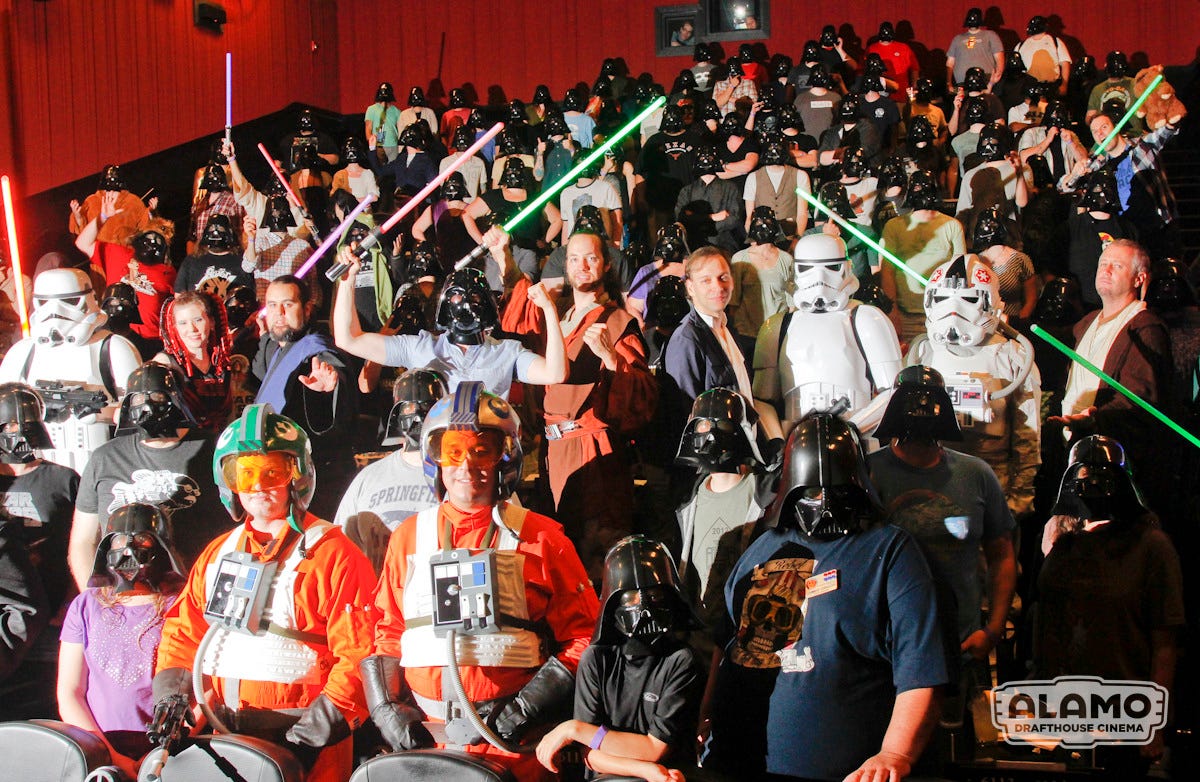There are many NFT communities built around fandom such as NBA TopShot for basketball fans or ArtBlocks for generative art fans.
I'm leading the community efforts for a new NFT company JUKE built for film and TV fans. So I asked myself “how do I create a community that is aligned with a successful business strategy?” This is my hypothesis.
The strategy is to build a home for true fans and a pipeline to true fandom.
A Home for True Fans
In his now famous article 1000 True Fans, Kevin Kelly describes true fans as those who regularly buy your stuff and recruit new members. They are the most valuable to the business because they're a higher reliability for income; they spend money repeatedly on this fandom. They are also more enthusiastic, which attracts new members. It's within this group that the business has an opportunity to sell things and earn consistent revenue to support operations and growth.
So the first goal is to build a home for this group, a place they want to spend time. To do that, I have to ask "What do true fans want? What do they go crazy for? And how can I help them succeed in a way they want to succeed?" Then provide them with this value in a way they're willing to pay for.
For example, Star Wars true fans go crazy for things like merchandise (movie posters, costumes, toys), access (movie tickets, exclusive content), VIP experiences (invited to premier, meet the talent.) If a community can offer this, then true fans will be more likely to want to spend time and money. They may also contribute to improving the community for themselves and others. So it’s our job to find the opportunities to provide this type of value.
A Pipeline to True Fandom
Since true fans are the engine of the business, we need a pipeline to add more of them. So we need to build a path from visitors to casual fans to true fans.
Casual fans are the ones who buy stuff sometimes. From a business lens, they're an inconsistent source of revenue. "The real win is in turning a casual fan into a true one," Seth Godin said in Tribes. To do that I have to ask "What do casual fans want? Can I show them new ways to connect with the things they like? How can I encourage them to want to take the path to true fandom?"
For example, I'm a casual fan of Star Wars. My family and I saw the movies in theaters each year when they came out. We wore regular clothes, not like the Storm Troopers above. Our fandom became passive after the theater experience. I love the characters and stories, and could be shown ways of deeper connection, but that hasn't happened yet. Opportunity here there is.
Lastly, I need to make a space for visitors to explore, learn what this community is about, and understand how to become a member. "Prospective members must have a way to behave like the current community members before we require them to believe in and value the same things we do,” Charles Vogl teaches in The Art of Community. “Newcomers may need time to grow into full membership.”
Thus the pipeline is complete guiding them to their hopeful true fan home.
I’m on an adventure with the JUKE team to build something new in the entertainment world. I’m putting these ideas in action, and maybe I'll discover obstacles and have to change course, but as Han Solo says “Traveling through hyperspace ain’t like dusting crops, farm boy.”





